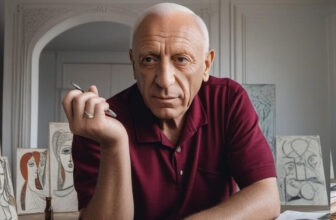
The Death of Leonardo da Vinci: Unraveling the Mysteries
Leonardo da Vinci, artist, inventor, scientist, and quintessential Renaissance polymath, left an indelible mark on the world. His death, however, has remained shrouded in intrigue and speculation, inviting historians and scholars to piece together the final moments of this extraordinary figure. As we explore what caused da Vinci’s death, we also gain a deeper understanding of the man whose contributions continue to resonate across centuries.
Leonardo’s Later Years
In the final years of his life, da Vinci lived in France under the patronage of King Francis I. In 1516, he accepted an invitation from the French monarch to reside at Clos Lucé, a manor near the king’s royal château in Amboise. Here, da Vinci was provided with generous resources and the freedom to pursue his intellectual and artistic interests. Surrounded by devoted disciples and admirers, he spent his twilight years reflecting on his legacy, advancing his studies, and completing various projects, including sketches and manuscripts.
Despite the idyllic setting, da Vinci’s health began to deteriorate. Historical accounts describe him as having suffered from physical ailments that hindered his ability to work as rigorously as he once did. The exact cause of his declining health, however, remains a subject of debate.
Stroke: A Likely Culprit
The most widely accepted theory about da Vinci’s death points to a stroke. Giorgio Vasari, a 16th-century biographer and one of da Vinci’s earliest chroniclers, wrote that the artist’s right hand became paralyzed in his later years. This condition, likely caused by a cerebrovascular event, would have severely impacted his ability to paint and draw. It is worth noting that da Vinci was left-handed, which may have allowed him to continue writing and sketching despite the paralysis.
A stroke could explain not only the physical symptoms but also the eventual decline in da Vinci’s overall health. Medical historians suggest that such an event may have been compounded by age-related ailments, including cardiovascular disease. At the time of his death on May 2, 1519, Leonardo da Vinci was 67 years old, an impressive age for the Renaissance era, when life expectancy was considerably shorter.
Secondary Health Issues
Beyond the stroke, da Vinci’s later life was likely marked by a combination of other health issues. Chronic conditions such as arthritis and possible respiratory problems could have further weakened him. Some historians speculate that da Vinci’s meticulous lifestyle, including his vegetarian diet and penchant for moderation, may have prolonged his life, but could not shield him entirely from the effects of aging and disease.
Myths and Misconceptions
The mystery surrounding da Vinci’s death has also given rise to various myths. One popular but unfounded claim is that he succumbed to poisoning or foul play, perhaps due to political intrigue or professional rivalries. While the Renaissance was rife with conspiracies, there is no credible evidence to support such theories in da Vinci’s case. Historical records indicate that he passed away peacefully in his bed at Clos Lucé, attended by his loyal followers and confidants.
Another misconception stems from Vasari’s account, which romanticizes da Vinci’s death by suggesting that King Francis I was present to hold his hand as he passed away. While this depiction underscores the close bond between the two, modern historians regard it as more symbolic than factual.
The Legacy of a Genius
Although the precise cause of da Vinci’s death may never be fully understood, his life’s work continues to inspire awe and admiration. From the enigmatic “Mona Lisa” and the intricate “Last Supper” to his visionary sketches of flying machines and anatomical studies, da Vinci’s genius transcends the boundaries of time and discipline.
His writings, known collectively as the Codices, offer profound insights into his mind. These notebooks reveal not only his artistic techniques but also his scientific inquiries, from the study of water dynamics to the mechanics of human movement. Da Vinci’s interdisciplinary approach set a precedent for innovation, blending art and science in ways that were centuries ahead of his time.
Reflecting on Mortality
Leonardo da Vinci’s reflections on mortality and the human condition are evident in his writings and artwork. His sketches often depict anatomical dissections and studies of aging, underscoring his fascination with the fragility of life. One of his famous quotes, “As a well-spent day brings happy sleep, so a life well used brings happy death,” encapsulates his philosophical outlook.
In his will, da Vinci expressed a desire for a modest funeral and left instructions for his estate to be divided among his trusted associates and servants. His burial took place at the Church of Saint-Florentin in Amboise, though the church was later destroyed, and his exact resting place remains uncertain.
The death of Leonardo da Vinci marked the end of an era but also the beginning of an enduring legacy. While the exact cause of his passing, likely a stroke, may remain speculative, what is unequivocal is the impact of his life’s work. Leonardo’s genius continues to illuminate the realms of art, science, and human creativity, reminding us of the boundless potential of the human mind. As we remember his contributions, we are also reminded of our own fleeting existence and the importance of leaving a meaningful mark on the world.





